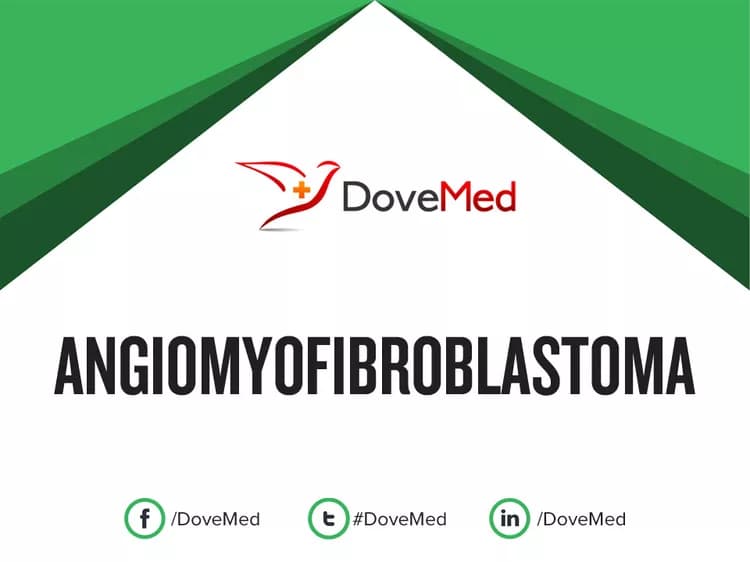What are the other Names for this Condition? (Also known as/Synonyms)
- AMF (Angiomyofibroblastoma)
- Angiomyofibroblastoma of Vulva
- Pelvic Angiomyofibroblastoma
What is Angiomyofibroblastoma? (Definition/Background Information)
- Angiomyofibroblastoma (AMF) is a benign tumor of the soft tissues that occurs in the pelvic region and in areas, between the anus and genitals (called perineum), generally in females
- The cause of Angiomyofibroblastoma is unknown and no definitive risk factors have been identified
- Most tumors do not present significant signs and symptoms. Some may grow to larger sizes and cause emotional stress and pressure in the pelvic region
- Surgical excision of the tumor, to the extent possible, is the preferred method of treatment. With adequate treatment, the prognosis of Angiomyofibroblastoma is generally excellent, since the recurrence risk is very low-to-absent
Who gets Angiomyofibroblastoma? (Age and Sex Distribution)
- Angiomyofibroblastoma mostly affects females (women) in the age group 10-50 years (between menarche and menopause); pre-pubertal girls are not affected
- 1 in 10 cases have been identified in postmenopausal women
- There have been rare instances of the tumor being diagnosed in males
- There is no known ethnic group or racial preference
What are the Risk Factors for Angiomyofibroblastoma? (Predisposing Factors)
Currently, the main identified risk factor for Angiomyofibroblastoma can be considered as the gender of the individual.
- Girls after puberty and young-to-middle-aged adult women have a high risk for tumor development
- Women after menopause can also be affected and are at risk
It is important to note that having a risk factor does not mean that one will get the condition. A risk factor increases ones chances of getting a condition compared to an individual without the risk factors. Some risk factors are more important than others.
Also, not having a risk factor does not mean that an individual will not get the condition. It is always important to discuss the effect of risk factors with your healthcare provider.
What are the Causes of Angiomyofibroblastoma? (Etiology)
- The exact cause and mechanism of Angiomyofibroblastoma formation is unknown
- Some tumors have revealed certain genetic abnormalities that are being currently researched upon
What are the Signs and Symptoms of Angiomyofibroblastoma?
Angiomyofibroblastoma signs and symptoms may include:
- In some cases, the tumors remain asymptomatic or present only a set of mild symptoms. As a result of this, they remain undetected during the initial formative phase
- The benign tumors grow at a very slow rate and may present no pain or tenderness
- The tumors are well-circumscribed with clear borders
- Almost all the tumors are observed in the pelvic region, between the anus and the genitalia
- In females, the vulva (external opening of the vagina) is the frequent site for tumor; 10-15% of the tumors are known to affect the vagina
- Some individuals (women) may experience a sense of pressure in the region, if the tumor grows to large sizes
- In men, soft tissues of the testis or scrotum are affected
- Majority of the tumors are less than 5 cm in size, while some grow undetected to 10 cm due to the lack of significant signs and symptoms
How is Angiomyofibroblastoma Diagnosed?
A diagnosis of Angiomyofibroblastoma is made using the following tools:
- Complete physical examination and evaluation of the individual’s medical history
- Radiological studies conducted on the tumor through CT and MRI scans
- Tissue biopsy: A biopsy of the tumor is usually performed to confirm the diagnosis. A pathologist examines the biopsy under a microscope. After putting together clinical findings, special studies on tissues (if needed) and with microscope findings, the pathologist arrives at a definitive diagnosis
Note: The tumor can present diagnostic challenges as they are often confused during the initial stages for a Bartholin’s cyst and with an aggressive angiomyxoma (when observed under a microscope).
Many clinical conditions may have similar signs and symptoms. Your healthcare provider may perform additional tests to rule out other clinical conditions to arrive at a definitive diagnosis.
What are the possible Complications of Angiomyofibroblastoma?
Complications due to Angiomyofibroblastoma could include:
- The presence of the tumor can lead to painful sexual intercourse
- Emotional stress due to a concern for cancer
- If the tumor is large and has infiltrated deep into adjoining regions, it may lead to significant risks during surgical operations, which could include damage of vital nerves, blood vessels, and other adjoining organs
How is Angiomyofibroblastoma Treated?
Treatment measures for Angiomyofibroblastoma may include the following:
- The healthcare provider may recommend a ‘wait and watch’ approach for small-sized tumors that do not cause any significant signs and symptoms
- Complete surgical excision and removal of the entire tumor may be performed if the tumor is large and/or presents severe symptoms
- Support to help with stress and anxiety
- Follow-up care with regular screening and check-ups are important and encouraged
How can Angiomyofibroblastoma be Prevented?
Current medical research has not established a way of preventing Angiomyofibroblastoma.
What is the Prognosis of Angiomyofibroblastoma? (Outcomes/Resolutions)
- Angiomyofibroblastoma is a benign tumor and the prognosis is excellent with suitable treatment
- There is no risk of recurrence following its surgical removal
Additional and Relevant Useful Information for Angiomyofibroblastoma:
Please visit our Cancer & Benign Tumor Health Center for more physician-approved health information:
Related Articles
Test Your Knowledge
Asked by users
Related Centers
Related Specialties
Related Physicians
Related Procedures
Related Resources
Join DoveHubs
and connect with fellow professionals


0 Comments
Please log in to post a comment.